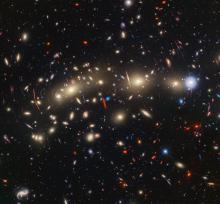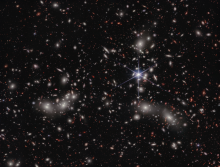Listen to today's episode of StarDate on the web the same day it airs in high-quality streaming audio without any extra ads or announcements. Choose a $8 one-month pass, or listen every day for a year for just $30.
You are here
Hunting by Gravity
Astronomers are following the trail to Planet Nine. The trail is marked by chunks of ice and rock far from the Sun. The way their orbits line up suggests they’re being “herded” by the gravity of a planet. It would be tens of billions of miles from the Sun, and up to about 10 times as massive as Earth.
Astronomers have used a similar technique to track down other worlds — or at least try to.
The best-known success story came in 1846, with the discovery of Neptune, the eighth planet from the Sun. Some odd things about the orbit of Uranus, the seventh planet, hinted that a more-distant world was tugging at it. Two astronomers predicted where that world might be found — and they were right.
Flush with that success, astronomers tried to find another planet. They’d plotted some odd things about the orbit of Mercury, the Sun’s closest planet — suggesting there might be a planet even closer to the Sun. They called it Vulcan, and looked for it for decades. But it’s just not there. Instead, Mercury’s orbit is being dragged by a “warp” in space caused by the Sun’s gravity.
And a couple of decades ago, a team looked at the orbits of a class of comets. Many of the comets looked like they were lined up by the gravity of a giant planet or a “failed star” far from the Sun. So far, though, no one has seen such a body.
So the search for Planet Nine continues — a world that might be herding smaller bodies in the outer solar system.
Script by Damond Benningfield





